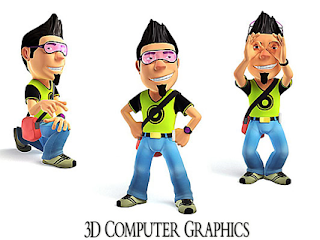Explore the fundamentals of multimedia technology, focusing on graphics and images. Discover the differences between bitmap and vector images, understand image resolutions and aspect ratios, and dive into various image data types from monochrome to 32-bit color images. Perfect for those wanting an in-depth understanding of digital image technology!

Table of Contents
Introduction
Multimedia technology shapes how we interact with the world, especially in today’s digital age. With advancements in graphics, images, video, and sound, multimedia has become an essential part of communication, entertainment, and business. This article delves into the intricacies of digital graphics and images, covering the fundamental concepts of image types, quality, and the technicalities of various formats that define what we see on our screens.
Bitmap Images
Bitmap images, also known as raster images, consist of pixels arranged in a grid format. Each pixel has a specific color, and when combined, these pixels create a complete image. Bitmap images are widely used for photographs and other detailed graphics but suffer from one limitation: they lose quality when scaled up. This is because enlarging a bitmap image stretches the pixels, causing visible pixelation.
Common bitmap image file formats include:
- JPEG: Ideal for photographs, with high compression and slightly lower quality.
- PNG: Lossless compression, excellent for images requiring transparency.
- GIF: Supports simple animations and a limited 256-color palette.
Advantages of Bitmap Images
- High Detail: Great for complex images with intricate color variations.
- Editing: Allows pixel-level modifications for high customization.
Disadvantages of Bitmap Images
- Scalability: Quality loss when resized.
- File Size: Can be large, especially in high-resolution formats.
Vector Images
Vector images use mathematical formulas to define shapes like lines, circles, and polygons instead of relying on pixels. This allows them to be infinitely scalable without quality loss, making them ideal for logos, icons, and other graphics that need to be resized often.
Popular vector image formats include:
- SVG (Scalable Vector Graphics): Widely supported on the web and ideal for responsive design.
- EPS (Encapsulated PostScript): Commonly used in print media for high-resolution output.
Advantages of Vector Images
- Scalability: Can be resized without losing quality.
- Smaller File Size: Less storage space is required than bitmap images.
Disadvantages of Vector Images
- Limited Detail: Not suitable for complex images like photographs.
- Software Requirements: Editing requires vector-based software, such as Adobe Illustrator.
Image Resolution and Aspect Ratio
Resolution and aspect ratio are two crucial factors affecting the quality and appearance of digital images.
Image Resolution
Resolution refers to the number of pixels per unit of area, usually measured in pixels per inch (PPI) or dots per inch (DPI). Higher resolution means more pixels, resulting in greater detail.
Types of Image Resolutions:
- Low Resolution (72-150 DPI): Suitable for web images.
- Medium Resolution (150-300 DPI): Common for print media.
- High Resolution (300+ DPI): Used for professional photography and large print formats.
Aspect Ratio
Aspect ratio defines the proportional relationship between an image’s width and height. Common ratios include 4:3 (standard TV), 16:9 (widescreen), and 1:1 (square). Choosing the correct aspect ratio ensures the image fits properly without distortion.
Image Data Types
Image data types determine the number of colors or grayscale shades that an image can represent. Each type uses a specific bit depth, controlling the color richness and image fidelity.
Monochrome / 1-Bit Images
Monochrome images are the simplest form of digital images, consisting of only black and white pixels, with no gray shades. They are represented using 1 bit per pixel (1-BPP), meaning each pixel is either black or white. Monochrome images are lightweight and used for basic graphics, icons, and binary images.
8-bit Grayscale Images
An 8-bit grayscale image consists of 256 shades of gray, ranging from black to white. With 8 bits per pixel, these images are ideal for applications that require a higher level of detail than monochrome but do not need full color, such as medical imaging and document scanning.
8-bit Color Images
8-bit color images can display up to 256 colors. While not suitable for high-quality photography, they work well for simple web graphics and icons. These images are often used in formats like GIF, which limits the color palette but allows for smaller file sizes.
24-bit Color Images
24-bit color images, also known as true-color images, are widely used in digital photography and graphic design. With 8 bits per color channel (red, green, and blue), they can display over 16 million colors. This high color depth allows for realistic images and is the standard for most photographic formats, including JPEG and PNG.
32-bit Color Images
32-bit color images include an extra 8-bit channel for alpha transparency, allowing for complex images with semi-transparent layers. Used in advanced graphics and design, this format supports rich visuals in applications such as game design and digital art.
Frequently Asked Questions
What is the main difference between bitmap and vector images?
Bitmap images consist of pixels and are best for detailed graphics, while vector images use mathematical shapes and are scalable without quality loss.
Why is image resolution important?
Image resolution determines the detail level in an image, impacting its quality, especially in print. Higher resolution offers more clarity, but it also increases file size.
How do 24-bit and 32-bit images differ?
24-bit images contain color data for red, green, and blue channels, while 32-bit images add an extra alpha channel for transparency, allowing for effects like translucency.
What is the advantage of vector images over bitmap images?
Vector images are scalable and retain quality regardless of size, making them ideal for logos, icons, and any graphic that needs resizing.
Which image type should I use for web design?
For most web applications, JPEG and PNG are suitable as they offer high quality at relatively small file sizes. SVG is also excellent for scalable graphics, like icons and logos.
What is the best format for image transparency?
PNG and 32-bit color images are preferred for transparency. PNG is more commonly used on the web, while 32-bit color images offer advanced transparency effects in graphic design.
With this comprehensive guide, you now have a solid foundation in multimedia technology as it pertains to digital graphics and images. Understanding the different types of images, resolutions, and formats can help you choose the best options for various applications, whether you’re working in graphic design, web development, or digital media.




